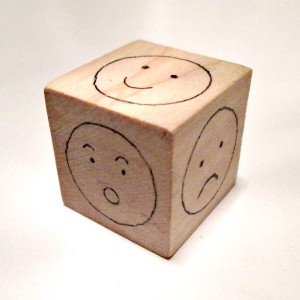Last week I introduced you to a simple practice that has transformed my family. If you haven’t yet, you can read about that (and sign up for the giveaway I’m hosting) here. This week I want to share a way to make it even more effective!
When we check in as a family, we ask each member to choose from only six emotions. This might seem limiting, but it has several advantages:
- Choosing from a short list of emotions is less intimidating for people who aren’t used to talking about their feelings.
- Rather than limiting your expression, it actually allows you to feel what you’re feeling more deeply.
- Being more honest about what you’re really feeling helps you respond appropriately. If I say I’m “frustrated”, it’s really just a more socially acceptable way of saying “I’m angry”. When I acknowledge my anger, I’m free to address it and move on.
Here are the 6 basic emotions we use:
- sad
- angry
- scared
- happy
- excited
- tender
They’re all pretty self explanatory except “tender”. We describe it as empathy or sympathy, feeling something on behalf of someone else. Many adults think children lack this ability, but I’m amazed at how often our kids check in as “tender”.
It’s important to note that everyone can choose as many of these emotions as they’d like. More often than not, we’re feeling several emotions at once, and checking in is a simple way to honor that complexity.
My friend Mina came up with a way to make this even easier and more fun. She took a cube and put one emotion on each face. This cube can serve as a reference if people have trouble remembering the emotions on the list, or they can be used to play different games.
For example, each person could roll the die and tell a story of a time you felt the emotion that lands face up. Or each person could roll the die and act out the emotion that lands face up. This is great way of teaching young children about healthy expression of emotions.
Why? Because your heart matters. It matters to us, and it matters to God.
Once we used this process with 10 children and teens who were in conflict. Things were extremely tense, but everyone was familiar with checking in and agreed to do it. As they each took their turn, it was amazing to see repentance, forgiveness, and reconciliation happening before our eyes. The adults didn’t orchestrate any of it (I know, it sounds unrealistic. I wouldn’t believe it myself if I hadn’t witnessed it). We just gave each child a chance to be truly heard.
Now it’s your turn: I want to hear from you in the comments: Which one of these 6 emotions do you have the hardest time expressing and why?
I’ll share my answer to start things off.
